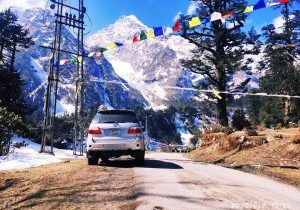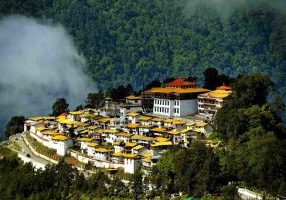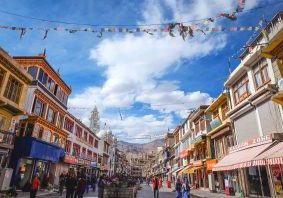The sacred island of Rameshwaram, 163km southeast of Madurai and less than 20km from Sri Lanka across the Gulf of Mannar, is, along with Madurai, south India’s most important pilgrimage site. Rameshwaram is mentioned in the Ramayana as the place where the god Rama, as an incarnation of Vishnu, worshipped Shiva, and consequently attracts followers of both Vishnu and Shiva. The Ramalingeshwara Temple complex, with its magnificent pillared walkways, is the most famous on the island, but there are several other small temples of interest, such as the Gandhamadana Parvatam, sheltering Rama’s footprints, and the Nambunayagi Amman Kali Temple, frequented for its curative properties. Danushkodi (Rama’s Bow) at the eastern end is where Rama is said to have bathed. The boulders peppering the sea between here and Sri Lanka, making “Rama’s bridge” (Rama Sethu), were strategically placed by Hanuman’s monkey army so they could cross to Lanka in their search for Rama’s wife Sita, after her abduction by the demon king Ravana. The town offers uncommercialized beaches (not India’s most stunning) where you can unwind, bathe and do ablutions.
PLACES TO VISIT IN THIS REGION
Although considerably enlarged and extended through the ages, the overall layout of Madurai’s old city, south of the River Vaigai, has remained largely unchanged since the first centuries AD, comprising a series of concentric squares centred on the massive Meenakshi Temple. Aligned with the cardinal points, the street plan forms a giant mandala, whose sacred properties are activated during the regular mass clockwise circumambulations of the central temple. North of the river, Madurai becomes markedly more mundane and irregular. You’re only likely to cross the Vaigai to reach the city’s more expensive hotels or the Gandhi Museum.
Accommodation in Rameshwaram
Accommodation in Rameshwaram comprises a mixture of basic old lodges in the streets around the temple and newer hotels, mostly in the direction of the transit points. The temple authorities also provide pilgrim rooms; ask at the Devasthanam Office, East Car St. During holidays and festivals, rooms are like gold dust and just as pricey.
Ramalingeshwara Temple
The core of the Ramalingeshwara (or Ramanathaswamy) Temple was built by the Cholas in the twelfth century to house two much-venerated shivalingams associated with the Ramayana. After rescuing his wife Sita from the clutches of Ravana, Rama was advised to atone for the killing of the demon king – a Brahmin – by worshipping Shiva. Rama’s monkey lieutenant, Hanuman, was despatched to the Himalayas to fetch a Shivalingam, but when he failed to return by the appointed day, Sita fashioned a lingam from sand (the Ramanathalingam) so the ceremony could proceed. Hanuman eventually made it back bearing a lingam and in order to assuage the monkey’s guilt Rama decreed that in future, of the two, Hanuman’s should be worshipped first. The lingams are now housed in the inner section of the Ramalingeshwara, but can only by viewed by Hindus. Much of what can be visited dates from the 1600s, when the temple received generous endowments from the Sethupathi rajas of Ramanathapuram.
The temple is enclosed by high walls, which form a rectangle with huge pyramidal gopura entrances on each side. Each gateway leads to a spacious closed ambulatory, flanked on either side by continuous platforms with massive pillars set on their edges. These corridors are the most famous attribute of the temple, their extreme length – 205m, with 1212 pillars on the north and south sides – giving a remarkable impression of receding perspective. Before entering the inner sections of the temple, pilgrims are expected to bathe at each of the 22 temple tirthas (tanks) in the temple – hence the groups of dripping-wet pilgrims, most of them fully clothed, making their way from tank to tank, to be soaked by bucket-wielding temple attendants. Monday is Rama’s auspicious day, when the Padilingam puja takes place. Festivals of particular importance at the temple include Mahashivaratri (ten days during Feb/ March), Brahmotsavam (ten days during March/April) and Thirukalyanam (July/Aug), celebrating the marriage of Shiva to Parvati.




